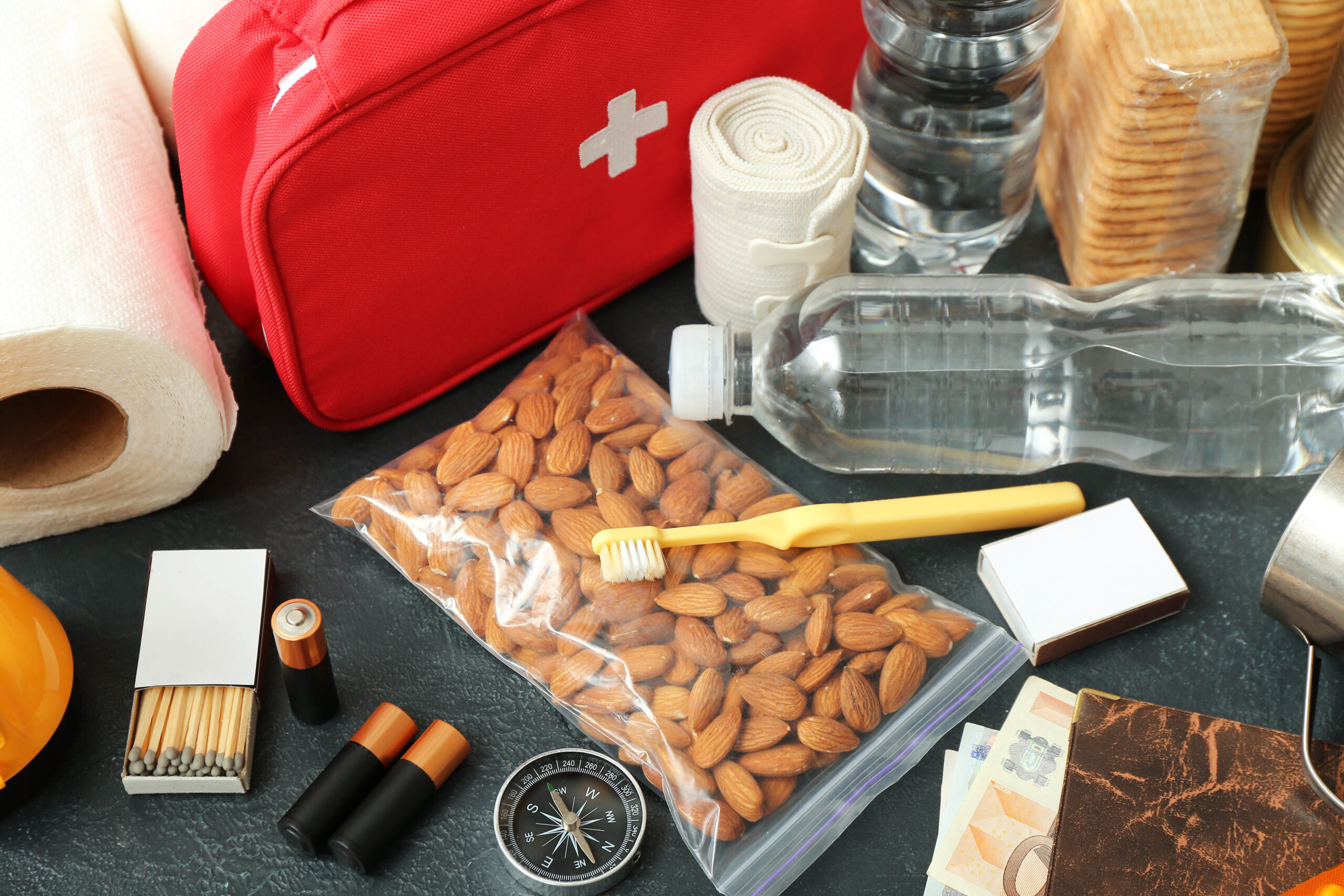Emergency Preparedness: Meal Kits for the Worst-Case Scenario
Updated: Apr 03, 2025
In an emergency, having access to reliable food sources can make all the difference in keeping you and your family safe and nourished. Check out how meal kits can provide you with an easy way to ensure you’re prepared for the unexpected, even when supplies may be scarce.

Emergencies come in many forms, from natural disasters and power outages to prolonged disruptions that can impact food availability. A well-thought-out emergency meal kit provides a simple and effective way to secure food for your household, whether you’re facing a storm or a long-term crisis. In this guide, we’ll cover everything you need to know about creating or purchasing meal kits for emergency preparedness, including key factors to consider, recommended supplies, and real-world examples of meal kits that can help you stay ready for the worst.
Why Emergency Meal Kits Matter
An emergency meal kit is a supply of ready-to-eat, long-lasting food designed to provide nutrition when you don’t have access to fresh groceries or your regular kitchen setup. Having meal kits on hand offers several benefits:
- Instant Access to Food: In a crisis, grocery stores may be closed, or supplies may be limited. Emergency meal kits ensure you have food even when your usual resources aren’t available.
- Long Shelf Life: Most emergency meal kits are specifically packaged to last for years without refrigeration, making them ideal for storage.
- Ease of Use: Emergency meal kits are often designed to be eaten as-is or with minimal preparation, which is crucial in scenarios where you might lack power, water, or cooking tools.
Types of Emergency Meal Kits
Emergency meal kits come in different forms, and the best choice depends on your specific needs, family size, and the types of emergencies you’re preparing for. Here are the main types:
-
Ready-to-Eat Kits:
These kits include meals that don’t require any cooking or water, like Military MREs (Meals Ready-to-Eat) or freeze-dried meals that can be eaten straight from the package. They’re a good option for situations where you may have limited access to water or heat. -
Freeze-Dried or Dehydrated Kits:
Freeze-dried kits typically require adding water but are lightweight and space-saving, making them ideal for compact storage or portability. These kits often include a variety of meals like pastas, soups, and breakfast items, offering a wider selection than MREs. -
DIY Food Storage Kits:
If you prefer a customized approach, building your own food kit with canned foods, dried grains, and packaged snacks is a good option. DIY kits allow you to create a menu based on your family’s tastes, but they may require more space and organization. -
Specialty Kits (Keto, Gluten-Free, etc.):
Some companies offer emergency meal kits tailored to specific dietary needs. If someone in your household has a dietary restriction, look for kits that meet those requirements to ensure everyone has adequate nutrition.
Essential Features of a Good Emergency Meal Kit
When choosing or creating an emergency meal kit, it’s important to consider a few key factors:
- Shelf Life: Aim for foods that last at least 5–25 years. Kits with freeze-dried or dehydrated foods generally offer the longest shelf life.
- Nutrition and Caloric Intake: Look for meal kits that provide enough calories per day to meet your family’s needs. Adults typically require 1,600–2,400 calories daily, but this may vary by age, gender, and activity level.
- Ease of Preparation: In an emergency, you may not have access to cooking facilities or water. Choose kits that include ready-to-eat foods or meals that only require adding hot water.
- Storage and Portability: Emergency meal kits should be easy to store and, if necessary, transport. Kits with stackable containers or buckets are ideal for compact, organized storage.
- Dietary Considerations: Take into account any special dietary needs, such as gluten-free, low-sodium, or vegetarian options, to ensure that everyone can safely consume the meals.
What to Include in Your Emergency Meal Kit
A well-rounded emergency meal kit should provide a variety of foods to ensure a balanced diet over several days or weeks. Here’s a list of essentials to include:
- Staple Meals: Choose meals that are high in protein, carbohydrates, and healthy fats to keep energy levels up. Examples include pasta dishes, rice and beans, and oatmeal.
- Protein Sources: Add shelf-stable proteins like canned meats, freeze-dried chicken, peanut butter, protein bars, and beans.
- Vegetables and Fruits: Choose freeze-dried or canned vegetables and fruits. They add important vitamins and variety to your meals.
- Snacks and Comfort Foods: Emergency situations are stressful, so including snacks like granola bars, nuts, or dried fruits can boost morale and provide energy.
- Beverages: Water is essential, but it’s also helpful to have powdered drink mixes or electrolyte packets in case of dehydration or when clean water is limited.
- Specialty Foods for Dietary Needs: If anyone in your household has dietary restrictions, include items that cater to their needs, like gluten-free grains or lactose-free milk powder.
Real-World Examples of Emergency Meal Kits
Here are some popular meal kit options available on the market, each offering different benefits based on your specific emergency needs.
1. Augason Farms 30-Day Emergency Food Supply
- Calories: Approximately 1,854 calories per day for one adult.
- Shelf Life: Up to 25 years if stored properly.
- Contents: Includes 307 servings with a variety of meals like creamy potato soup, oatmeal, macaroni and cheese, and instant potatoes.
- Preparation: Requires water to rehydrate most meals.
Best For: Households looking for a one-month food supply with balanced meal options for an emergency. This kit provides a good balance of variety and caloric intake, making it ideal for shelter-in-place situations.
2. Mountain House Essential Bucket
- Calories: 1,706 calories per day (based on a 3-day supply for one person).
- Shelf Life: 30 years if stored in cool, dry conditions.
- Contents: Contains freeze-dried meals like beef stew, scrambled eggs, rice and chicken, and macaroni and cheese.
- Preparation: Requires hot water to prepare each meal.
Best For: People who need a lightweight, space-saving option that offers flexibility. This kit is great for emergency situations where you need high-quality freeze-dried meals with minimal prep, making it ideal for both home storage and portability.
3. ReadyWise Emergency Food Supply
- Calories: Approximately 1,800 calories per day (based on a 2-week supply for one person).
- Shelf Life: Up to 25 years.
- Contents: 124 servings that include breakfast, lunch, dinner, and drinks such as pasta alfredo, cheesy lasagna, and yogurt.
- Preparation: Just add water; most meals are ready in 12–15 minutes.
Best For: Those who want a variety of flavors and meal types with easy preparation. The ReadyWise kit includes options for both meals and drinks, offering a more enjoyable experience during extended emergencies.
4. S.O.S. Rations Emergency Food Bars
- Calories: Each bar contains 410 calories, designed to meet basic nutritional needs.
- Shelf Life: 5 years.
- Contents: Individual emergency bars that do not require cooking or water.
- Preparation: Ready to eat directly from the package.
Best For: Minimalist, grab-and-go emergencies or short-term evacuation scenarios. These bars are compact, calorie-dense, and easy to store, making them ideal for keeping in an emergency bag or vehicle.
How to Store Your Emergency Meal Kit
Proper storage is crucial for extending the life of your emergency meal kit. Here are some tips to ensure your food stays safe and effective:
- Keep in a Cool, Dry Place: Store your kit in a dark, cool, and dry location to maximize shelf life. Avoid areas with frequent temperature fluctuations, like garages or attics.
- Use Airtight Containers: Many kits come in airtight buckets or Mylar bags. If you create your own kit, use sealed containers to keep moisture and pests out.
- Label and Rotate Supplies: Clearly label your kit with the purchase date, and rotate items as they approach their expiration date. For homemade kits, replace canned goods and snacks every 1–2 years.
- Check Regularly: Set a schedule to review your emergency food supply every six months to ensure nothing has expired and everything remains in good condition.
Final Thoughts
Preparing an emergency meal kit is a crucial step in ensuring your family’s safety and well-being in a crisis. By choosing high-quality, shelf-stable foods, storing them properly, and tailoring your kit to meet specific dietary needs, you can have peace of mind knowing you’re ready for the unexpected. Whether you purchase a pre-made kit or assemble your own, a well-prepared meal kit can provide essential support and nutrition when you need it most.

